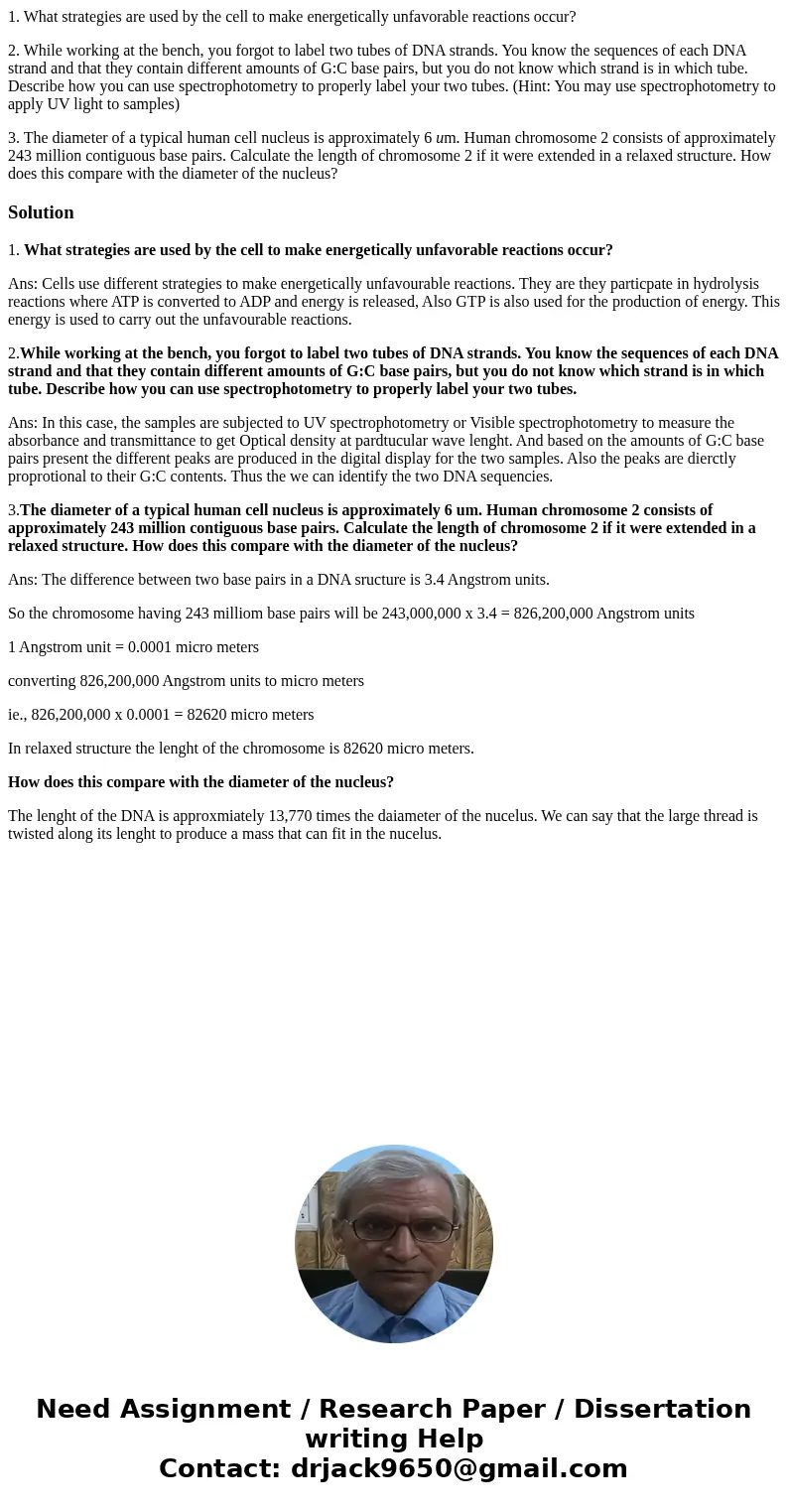1 What strategies are used by the cell to make energetically
1. What strategies are used by the cell to make energetically unfavorable reactions occur?
2. While working at the bench, you forgot to label two tubes of DNA strands. You know the sequences of each DNA strand and that they contain different amounts of G:C base pairs, but you do not know which strand is in which tube. Describe how you can use spectrophotometry to properly label your two tubes. (Hint: You may use spectrophotometry to apply UV light to samples)
3. The diameter of a typical human cell nucleus is approximately 6 um. Human chromosome 2 consists of approximately 243 million contiguous base pairs. Calculate the length of chromosome 2 if it were extended in a relaxed structure. How does this compare with the diameter of the nucleus?
Solution
1. What strategies are used by the cell to make energetically unfavorable reactions occur?
Ans: Cells use different strategies to make energetically unfavourable reactions. They are they particpate in hydrolysis reactions where ATP is converted to ADP and energy is released, Also GTP is also used for the production of energy. This energy is used to carry out the unfavourable reactions.
2.While working at the bench, you forgot to label two tubes of DNA strands. You know the sequences of each DNA strand and that they contain different amounts of G:C base pairs, but you do not know which strand is in which tube. Describe how you can use spectrophotometry to properly label your two tubes.
Ans: In this case, the samples are subjected to UV spectrophotometry or Visible spectrophotometry to measure the absorbance and transmittance to get Optical density at pardtucular wave lenght. And based on the amounts of G:C base pairs present the different peaks are produced in the digital display for the two samples. Also the peaks are dierctly proprotional to their G:C contents. Thus the we can identify the two DNA sequencies.
3.The diameter of a typical human cell nucleus is approximately 6 um. Human chromosome 2 consists of approximately 243 million contiguous base pairs. Calculate the length of chromosome 2 if it were extended in a relaxed structure. How does this compare with the diameter of the nucleus?
Ans: The difference between two base pairs in a DNA sructure is 3.4 Angstrom units.
So the chromosome having 243 milliom base pairs will be 243,000,000 x 3.4 = 826,200,000 Angstrom units
1 Angstrom unit = 0.0001 micro meters
converting 826,200,000 Angstrom units to micro meters
ie., 826,200,000 x 0.0001 = 82620 micro meters
In relaxed structure the lenght of the chromosome is 82620 micro meters.
How does this compare with the diameter of the nucleus?
The lenght of the DNA is approxmiately 13,770 times the daiameter of the nucelus. We can say that the large thread is twisted along its lenght to produce a mass that can fit in the nucelus.

 Homework Sourse
Homework Sourse